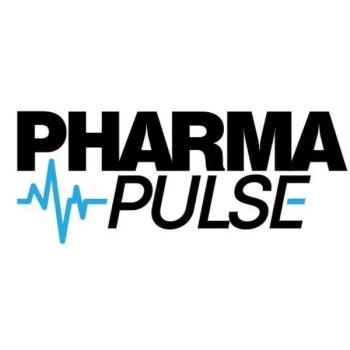
- Pharmaceutical Commerce - June 2024
- Volume 19
- Issue 3
Combining RWE and AI to Bend the Adherence Curve
By marrying real-world evidence and AI, pharma stakeholders can identify new opportunities to tailor interventions in a way that is most impactful to patients—helping them overcome roadblocks in initiating and maintaining therapy.
It’s widely understood that poor adherence to prescribed medication regimens has far-reaching clinical and cost implications for all healthcare stakeholders.
For example, patients who never start or don’t stay on prescribed treatments fail to control their symptoms and often experience disease progression and increased morbidity and mortality. Insurance companies end up paying for expensive medical interventions that could have been avoided by more stringent adherence to therapy. Meanwhile, even pharmaceutical brands fail to recoup the sunk costs associated with drug development and miss the opportunity to achieve competitive success for the brand when their often life-saving medicines—which were proven to be safe and effective in clinical trials—fail to deliver on their promise due to adherence lapses.
“Additional tangible and intangible societal costs arise in terms of job loss and reduced work productivity for both patients and caregivers,” says Pierantonio Russo, MD, chief medical officer for EVERSANA.
Considering how many clinical and financial factors, unmet social needs, mental health challenges, and comorbidities are at work, it’s no surprise that patients have a hard time remaining adherent to one or more complex therapy regimens as they struggle to manage one or more chronic conditions. While the reasons are varied, there is one thing everyone can agree on: No single “one-size-fits-all” intervention will suffice when it comes to helping diverse patients to overcome the diverse adherence challenges they face.
Fortunately, two factors are working in tandem to break the logjam on adherence:
- The collection of real-world data (RWD) from both established and novel sources continues to grow throughout the healthcare arena.
- The number of artificial intelligence (AI) methodologies—including those based on machine learning (ML), natural language processing (NLP), generative AI, and more—continue to mature, enabling stakeholders to convert RWD into real-world evidence (RWE) that provides actionable insights.
Personalization is the name of the game
When it comes down to interpreting patient data, specificity is likely to garner better outcomes.
“The goal is to use today’s advanced modeling technology to better understand the complex relationships between patient-level characteristics, adherence-related behaviors, and health outcomes, and then use the data-driven insights to deliver individual level outreach, making them patient-specific (not generalized) to improve outcomes,” says William Grambley, CEO, AllazoHealth.
In fact, being able to connect the source of information to one individual creates a more streamlined process.
“The ability to access many sources and link them to the same patient is really extraordinary in terms of increasing efficiency and helping us to make connections and predictions we could not have made before,” adds Amanda Bruno, PhD, MPH, senior vice president in real-world and late phase at Syneos Health. “It will be exciting to see how this increased sophistication in data will impact the pace and integrity of future evidence generation."
Ensuring quality, accuracy, and reliability of insights and predictions generated by today’s AI models is paramount. Stakeholders must prioritize the development of algorithms using credible real-world healthcare data, while also leveraging expertise from scientific and medical professionals. Validating models of predicted results against real patient outcomes is essential to ensure confidence and trust in AI-driven healthcare advancements, notes Christina Mack, chief scientific officer, real-world solutions, for IQVIA, adding: “Today’s predictive models continue to get better in terms of identifying which patients are at high risk for non-adherence, and that helps stakeholders to create personalized adherence interventions that are informed by the patient’s actual personal choices and barriers.”
Experts believe any opportunity to build an algorithm that accurately reflects patient behaviors in the real world can feed further understanding of the many barriers patients are facing, and from there, "then develop more targeted outreach that helps to personalize each patient journey based on predictability,” says Angela Wlodar, MS, Syneos Health’s senior vice president, medical affairs in business development.
Complex patients, complex drug regimens
In the clinical trial setting, safety and efficacy is validated in a highly controlled environment where drug regimens are administered and monitored closely by healthcare professionals, so adherence lapses are not a factor that impacts the drug’s performance.
“By contrast, once the drug moves into the real world, healthcare systems, providers, and patients become responsible for many of the factors that impact adherence, so a large amount of control is lost,” says Mack.
She notes that the types of adherence challenges patients face can be organized broadly into the following three buckets:
- System-related: Challenges that relate to access to healthcare resources and communication methodologies and format that may not be in the patient’s primary language.
- Treatment-related: Obstacles such as cost issues, complexity of the drug-administration requirements, and the impact of adverse effects.
- Patient-related:Challenges that connect back to comorbidities, management of side effects, mental health issues, and other considerations related to social determinants of health (SDOH).
“Creating effective interventions requires us to consider all of the factors we can modify to make the patient journey more successful, not just focus on what the patient is or is not doing,” adds Mack. “We see a lot of promise in marrying AI and RWE to meet the challenge, and we are pushing the envelope and investing in targeting these capabilities in a robust and validated way.”
One particularly vexing challenge for brand teams relates to patients who are prescribed complex drug regimens to manage potentially life-threatening conditions that present no real symptoms or discomfort on a day-to-day basis, such as cardiovascular disease, hypertension, high cholesterol, and diabetes.
“Patients are much more likely to remain adherent to their drug regimens if they feel their medications are helping to alleviate symptoms, make them feel better, and improve the quality of life,” says John Doyle, DrPH, president of consulting for Fortrea, and adjunct assistant professor at Columbia University’s Mailman School of Public Health. “Brand teams can be more effective in how they engage with patients by deploying AI to personalize messaging and behavior nudges, helping them connect the dots and really understand how the medications work, how their disease will progress, and what risks arise if they don’t remain adherent to therapy.”
Yet every patient has different needs and preferences related to this knowledge gap.
“If we’re not finding ways to personalize outreach to help patients and their caregivers manage their expectations and clarify how the health journey will continue to evolve at every inflection point, we’re missing a key opportunity to help the patient remain on therapy over the long term,” says Wlodar.
As an industry, “we do a lot of great marketing to physicians to support prescribing practices,” adds Bruno. “But not enough of the outreach is directed at patients to help them truly understand what’s at stake so they can take control and become better healthcare advocates for themselves.”
There’s another often-overlooked aspect when crafting patient-focused outreach.
“The tech industry and other consumer brands do a very good job persuading consumers to believe their products can really improve their lives and help them to be their best selves,” says Doyle. “Drug companies can learn from them and should make such targeted messaging a bigger part of their overall health and adherence intervention campaigns.”
Affordability, or lack there of, is another major contributor to poor adherence. Healthcare programs that implement technology advances on a continuous basis can help. For example, they can aid in streamlining the benefits-verification process or automating the steps required to onboard patients into a health plan. This can "help to instill confidence in access and reduce the burden for patients and healthcare providers by removing one more barrier to therapy,” notes Jordan Armstrong, VP of business development for AssistRx. Meanwhile, complex drug-administration regimens—particularly those associated with self-injected and infused biologic therapies—can be daunting, so quickly identifying which patient needs what type of support can be a benefit.
“Whether the patient needs support to coordinate travel to a doctor’s office or infusion center, or must learn how to self-administer these high-cost, high-stakes therapies at home, both can be difficult—even for the most motivated patients,”adds Armstrong.
Predicting behaviors, tailoring the outreach
All of this becomes even more daunting for patients facing structural health equity issues. Such SDOHs include challenges related to healthcare literacy, education level, socioeconomic status, lack of transportation, childcare challenges, and the inability to take time off work to manage health conditions. “More than ever, addressing these multi-faceted challenges requires tailored interventions, education, and support to enhance adherence and improve outcomes,” says Russo.
One proven strategy uses modeling and predictive capabilities to stratify patients by adherence risk factors as they are being enrolled into patient-support programs, so that tailored outreach can be offered based on individualized risk factors and communication preferences. “Using data-driven insights into the barriers a given patient is facing, pharma companies may choose to provide even more-targeted interventions, such as transportation, childcare, or lodging coordination and services to help them remain on therapy,” says Armstrong. Similarly, he notes that providing remote nursing-support resources is particularly useful to help patients master self-injection routines without the hurdles they may face in traveling to a provider’s office.
Deciding what to send to patients at what time
Pharma brand teams have a lot of options when it comes to how and when to influence and engage the patient, in terms of phone calls, email, and SMS text campaigns that provide reminders, information about adverse effects, access to nurses for clinical information, and benefits counselors. All of these avenues reduce the administrative burden for coverage.
But knowing exactly what to offer at what point in the patient journey so that a given touchpoint will be most effective is still a mystery to most brand teams, contends Grambley, whose company uses AI to make predictions on specific patients in order to tailor their results.
“By optimizing communications for patients at the right time, on the right channels, at scale, we have proven that we can get them on therapy sooner, stay on therapy longer, and get more benefit from the medication,” he says. “For the most part, we do not change the branded program offerings and messaging that the pharma company has already developed. Rather, by studying and modeling more than 500 different variables related to their preferences and behaviors in the past, we can deliver decision intelligence that allows the brand team to proactively target the timing and fine-tune which program elements reach which patients at what time.”
In one example working with a pharma brand that offers a therapy for a major depressive disorder (MDD), AllazoHealth’s AI platform was used to predict which patients were at risk of non-adherence to their MDD medication, determine the most impactful email content to address that risk, and personalize the communications for each patient. According to Grambley, doing so boosted first-fill rates by 8.4%, while average time a patient remained on therapy rose by 13%. Also, emails sent to MDD patients were 2.5 to 4.2 times more effective with AI optimization than those without.
Meanwhile, AllazoHealth is also piloting an advanced approach to personalize “dynamic modular content” with pharma clients. Consider a matrix that involves different versions of the approved subset line, headlines, email content message, and images that may resonate differently with different people, and specific calls to action that relate to different challenges patients may be facing.
“Using our data-driven intelligence, we are able to drive the optimal combination of elements from the matrix that will provide the most personalized and impactful outreach for any given patient," says Grambley. AllazoHealth plans to roll out this feature more broadly later this year.
Mack adds that having patients on the correct treatment pathway to begin with is a key component to adherence, and a place where leveraging AI and RWE can drive improvements. In a recent study in Germany, IQVIA leveraged local RWD to identify and profile unmet needs among asthma patients, based on demographics and other clinical drivers, leading to a 17% reduction in uncontrolled asthma in six months following new treatment initiation.
RWD sources that provide insights into patients’ lives
Traditionally, identifying non-adherent patients has relied on direct inquiries, surveys, and analysis of pharmacy data for missed refills, notes Ramaa Nathan, PhD, VP of data science and RWE insights, EVERSANA. However, both approaches are costly and time-consuming; frequently, they do not allow for the discovery of all non-adherence contributing factors.
By contrast, today’s AI methodologies are able to produce sophisticated pattern recognition and build models based not only on EHR data, lab tests, and phenotypes and genotypes associated with the disease, but can identify relevant patterns and make predictions related to patient demographic data and SDOH.
“We know these factors play a direct impact on drug adherence and clinical outcomes,” says Doyle.
“Today, we are able to build ML predictive models with inputs from extensive datasets, including clinical notes, administrative claims, behavioral health profiles, SDOH, patient-reported data, and social media listening for early identification of at-risk individuals,” adds Nathan. “This provides a superior approach over traditional regression methods, as it recognizes complex, non-linear patterns and its predictive accuracy improves over time with the input of new data.”
According to Nathan, classifying patients into different clusters and recognizing those patient sets that are most likely to encounter adherence issues can help when developing personalized outreach methods.
IQVIA is working to use NLP to simplify medical terminology for patients (removing a common adherence barrier),and has developed an AI-powered patient-relationship management tool, which, Mack says, is being used by several pharma brands.
“The chatbot can digest the patient’s input and route them to the most appropriate person or resource to triage the situation in a personalized and accurate way, allowing both patients and physicians to overcome barriers in access and affordability to promote adherence,” she adds.
Meanwhile, AssistRx’s patient-support programs currently use voice/tonal recognition technology to identify, address, and report on access and affordability challenges patients are facing that can reduce adherence. “As AI becomes more sophisticated, we’re excited for the opportunity to be able to flag patient behaviors and interactions—live during calls with our representatives—that are barriers to access and adherence, then proactively address those challenges,” says Jordan.
Success in this department, however, will ultimately come down to continuity.
“Once we as an industry put these life-saving therapies out into the world, sustained patient adherence is one of the most critical factors to ensure these products can deliver on their promise and potential,” says Mack.
The ability to implement AI, catered to specific patient needs, as detailed, will be a major catalyst in these efforts.
“Any given patient program will always help some people but not all of the people,” notes Grambley. “But when you can apply AI to really tailor the options and help patients to get exactly the type of support they need at the right time, it’s kind of magical.”
Articles in this issue
over 1 year ago
Pharmaceutical Commerce - June 2024 Issue (PDF)over 1 year ago
AI and Patient Behaviorover 1 year ago
Content is Indeed Kingover 1 year ago
Dynamic Pricing: What Pharma Needs?over 1 year ago
Justifying Price Fairnessover 1 year ago
How Serious Are You About Patient Centricity?over 1 year ago
The Need to Make Telehealth Flexibilities PermanentNewsletter
Stay ahead in the life sciences industry with Pharmaceutical Commerce, the latest news, trends, and strategies in drug distribution, commercialization, and market access.




